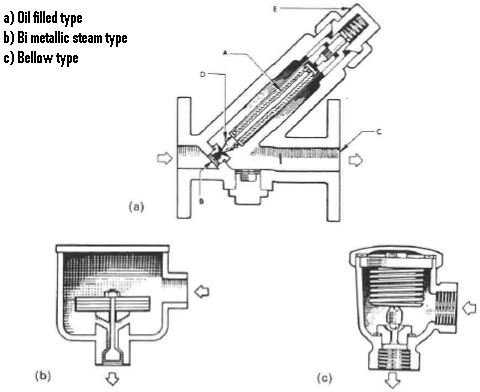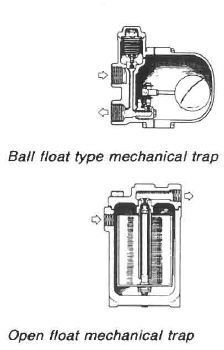Steam trap explained - How does a stream trap work?
Steam Trap Explained
Almost all mariners are familiar with the problem of steam hammering that occurs in steam lines. One reason for that problem is the generation and accumulation of steam condensate in the steam lines. To drain the condensate from the steam lines, steam traps are used.
Steam trap is nothing but a special type of automatic valve that prevents the passage of steam but allows the condensate to flow through. Generally used in steam lines, they drain the condensate without affecting the steam. This helps in drawing all the energy from steam and thus utilizing its latent heat as the steam is contained in the heating line until it is fully condensed.The three main types of steam traps are:
- Mechanical
- Thermostatic
- Thermodynamic
Apart from that, there are also vacuum trap and automatic pump.
Let’s take a look at all the three types and learn how does a steam trap work.
Orifice Trap
Before we get into the description of the three main types of traps, let’s take a look at the earliest and simplest form of steam trap. The orifice trap consists simply of a circular disc or a small pipe nipple with a small hole drilled at the lowest point of the equipment. The steam condensate will flow through the orifice and the steam gets locked because of its higher volume.
Thus the three main functions of any steam trap are :
- To prevent steam from escaping
- To allow the condensate to pass through
- To discharge air and other gases.
Mechanical Steam Trap
Mechanical steam traps are installed with ball floats or open floats to control a needle valve which controls the release of condensate. The float moves in accordance with the condensate level. A mechanical linkage attached to the float controls the opening and closing of the float, which solely depends on the level of condensate accumulated in the steam trap.
Thermostatic Steam Trap
Thermostatic trap, also known as the temperature trap uses expansion of a bimetallic strip, an oil filled element or a flexible below to activate a valve.
In an oil filled element type steam trap ( as shown in the figure), the element A expands as the temperature of the condensate rises. The expansion of element A leads to the closing of valve D. The temperature at which the valve needs to be actuated is to be set with the help of an adjustment screw E. The pressure of the system in which this type of valves are fitted, keeps on varying and thus there are chances of waterlogging or escaping of the steam.
The bi-metallic strip type steam traps are more efficient than the oil filled steam traps. The bi metallic strip expands and deflects as the temperature of the condensate increases. The deflection of the strip thus closes the valve. This type of steam trap can work on a wide range of pressure without readjustments. It can also work under superheat conditions without water hammering or vibrations.
In the flexible bellow type, the bellows is filled witha mixture that boils at a temperature lower than that at which the steam does. The trap holds back some of the condensate till it fully cools down in order the valve to open, thus self-compensating for operating pressure. This trap cannot resist any kind of water hammer or vibrations and would immediately damage if subjected to super heated steam.
In the next article we will discuss the thermodynamic type of steam trap and also learn how the maintenance of steam trap is done?

References
Marine Auxilary Macinery, 7th Edition by McGeorge H.D 1995
How steam traps work and why steam traps are necessary - Spirax Sarco
Online steam system and steam trap training - Armstrong International
Image Credits
Marine Auxilary Macinery, 7th Edition by McGeorgeH.D 1995
